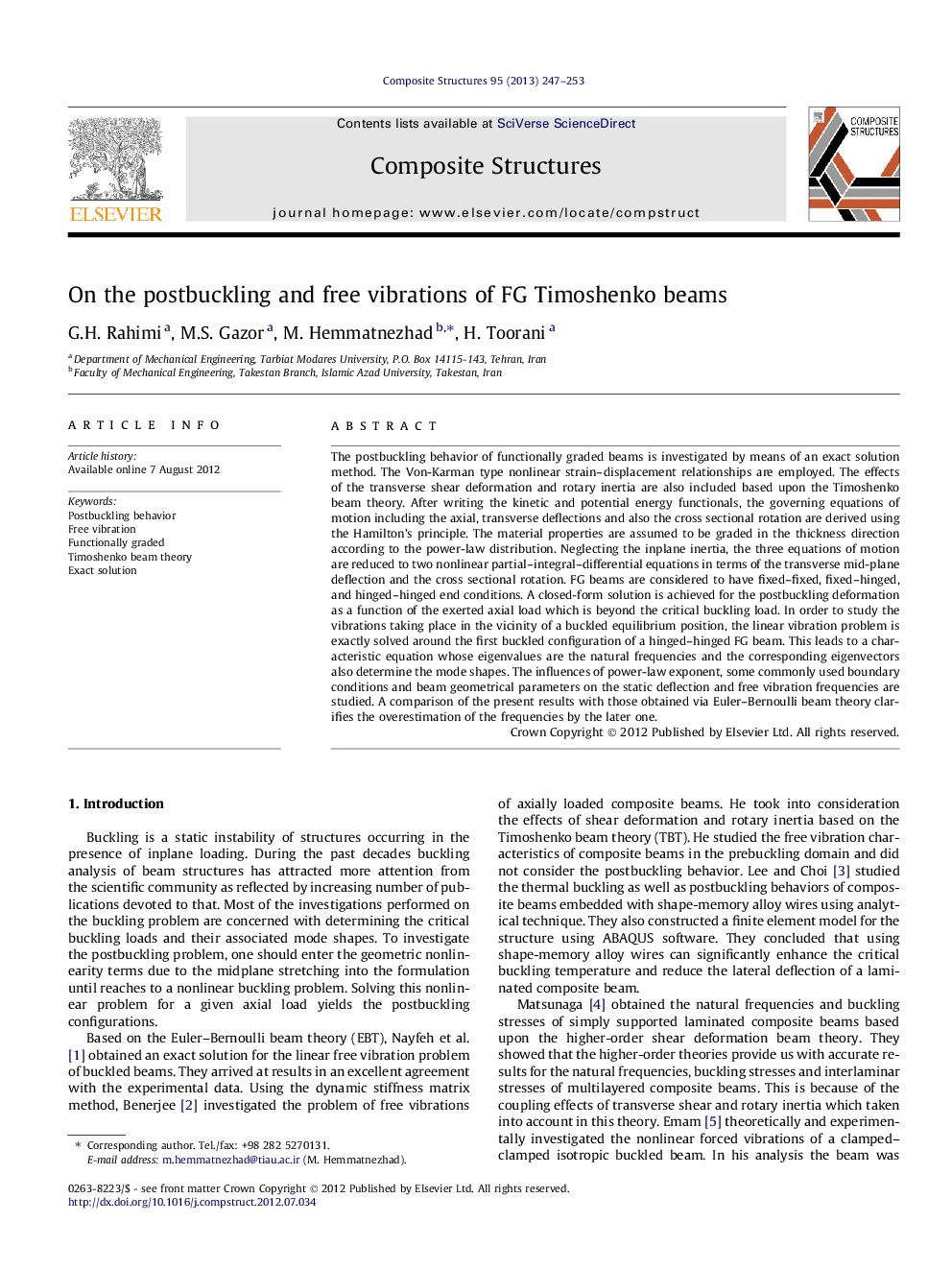| Article ID | Journal | Published Year | Pages | File Type |
|---|---|---|---|---|
| 252155 | Composite Structures | 2013 | 7 Pages |
The postbuckling behavior of functionally graded beams is investigated by means of an exact solution method. The Von-Karman type nonlinear strain–displacement relationships are employed. The effects of the transverse shear deformation and rotary inertia are also included based upon the Timoshenko beam theory. After writing the kinetic and potential energy functionals, the governing equations of motion including the axial, transverse deflections and also the cross sectional rotation are derived using the Hamilton’s principle. The material properties are assumed to be graded in the thickness direction according to the power-law distribution. Neglecting the inplane inertia, the three equations of motion are reduced to two nonlinear partial–integral–differential equations in terms of the transverse mid-plane deflection and the cross sectional rotation. FG beams are considered to have fixed–fixed, fixed–hinged, and hinged–hinged end conditions. A closed-form solution is achieved for the postbuckling deformation as a function of the exerted axial load which is beyond the critical buckling load. In order to study the vibrations taking place in the vicinity of a buckled equilibrium position, the linear vibration problem is exactly solved around the first buckled configuration of a hinged–hinged FG beam. This leads to a characteristic equation whose eigenvalues are the natural frequencies and the corresponding eigenvectors also determine the mode shapes. The influences of power-law exponent, some commonly used boundary conditions and beam geometrical parameters on the static deflection and free vibration frequencies are studied. A comparison of the present results with those obtained via Euler–Bernoulli beam theory clarifies the overestimation of the frequencies by the later one.
